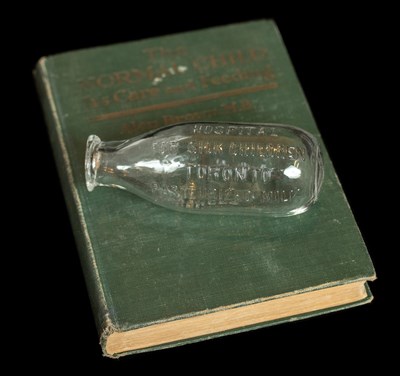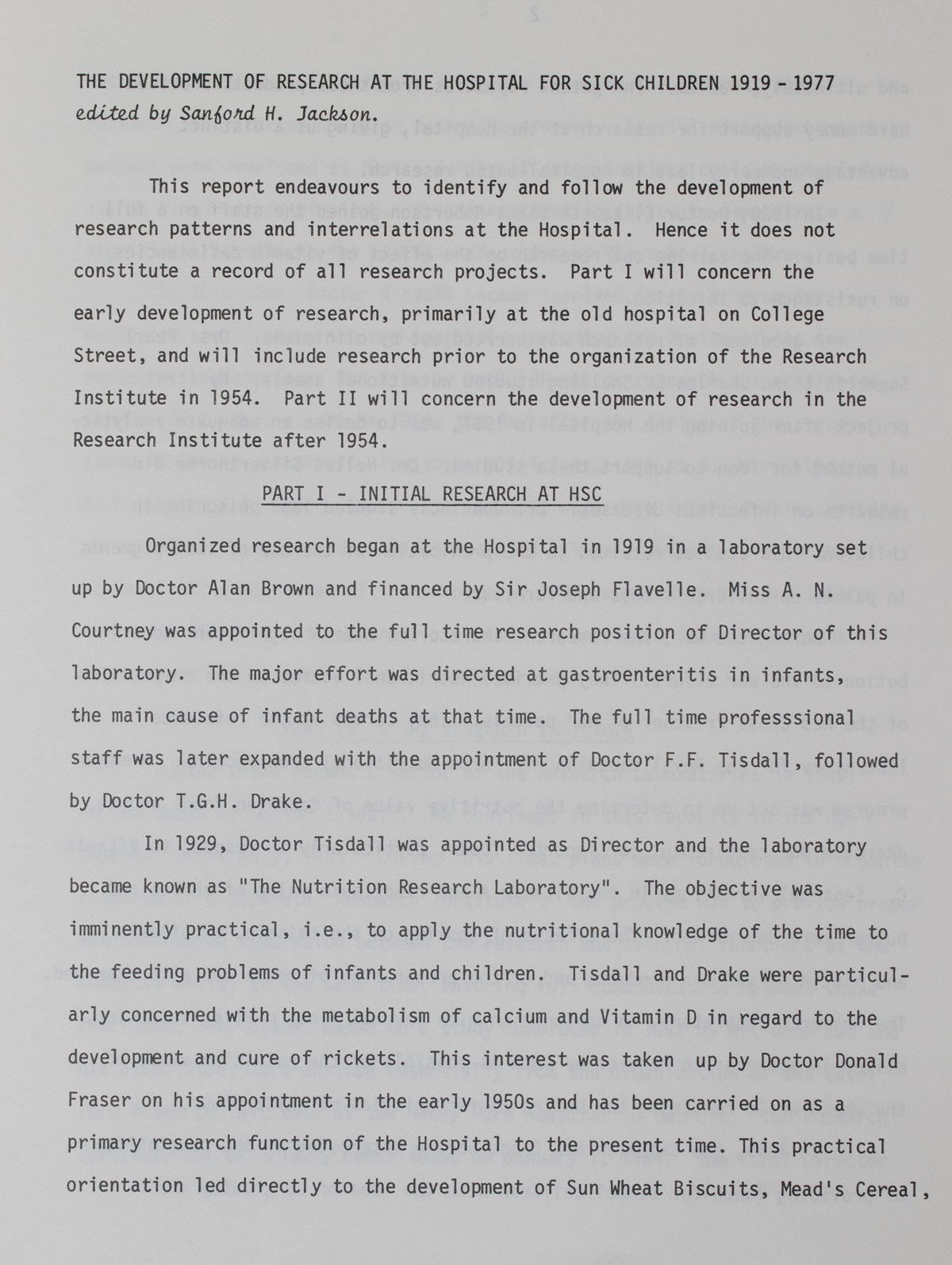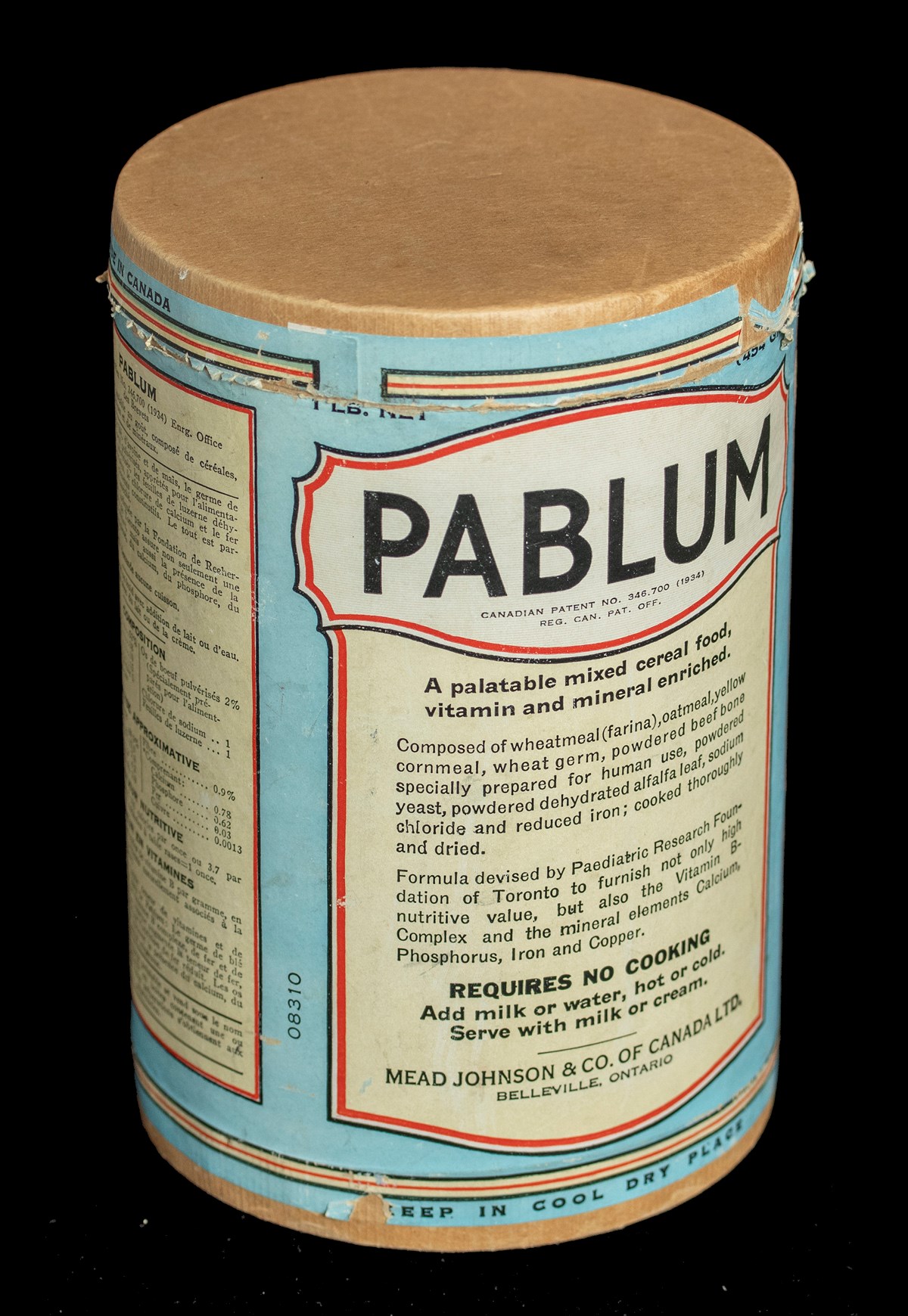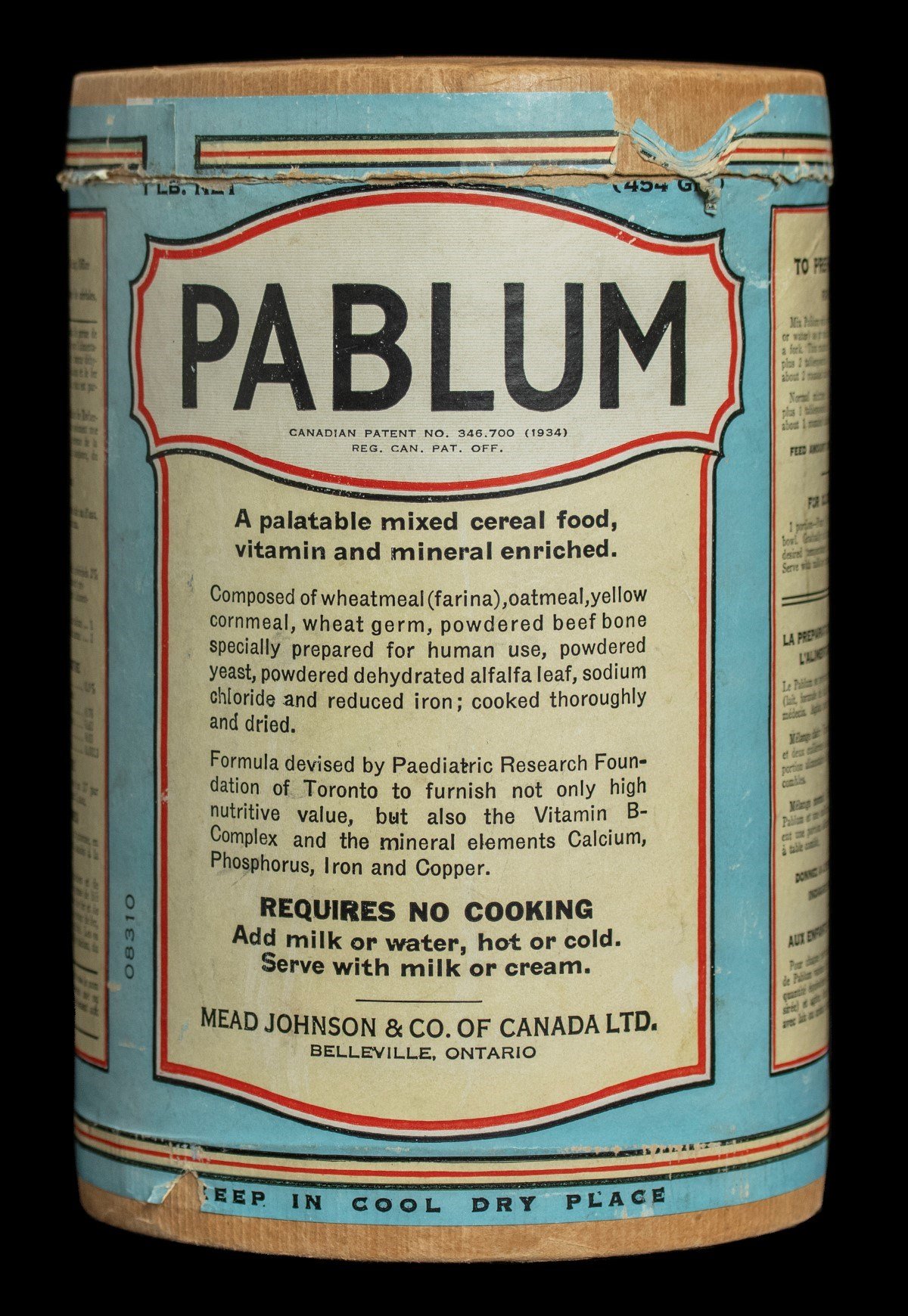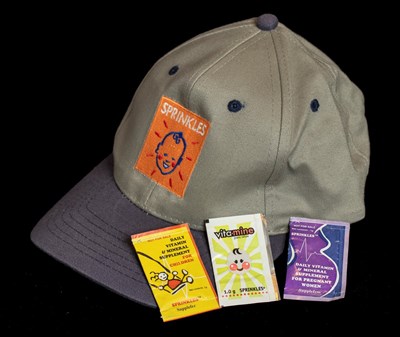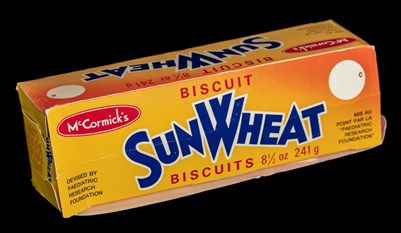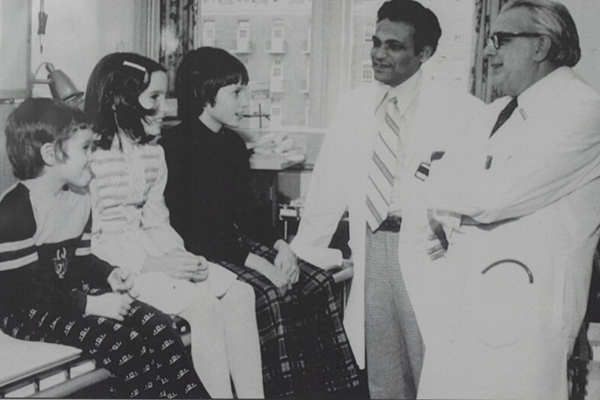
History of Nutrition
Curved bottom milk bottles
In 1908, the first Canadian milk pasteurization plant was established to combat the spread of disease through contaminated milk. The staff at SickKids installed the plant 30 years before pasteurization became mandatory across the Dominion. As part of the distribution process, parents were given rounded milk bottles with bottoms designed to prevent them from standing. This ensured that the bottles would be returned to the plant for cleaning and reuse.
Initial Research Laboratory at HSC, featuring Angelia Courtney
Organized research began at SickKids in 1919 by Dr. Alan Brown and shortly afterwards in 1920, Dr. Brown successfully convinced Angelia Courtney to leave the Babies’ Hospital in New York and come to Toronto as the first Director of the Hospital for Sick Children's (HSC) new Chemical Research Laboratories, also known as the Nutritional Research Laboratories.
Courtney, a dedicated and accomplished researcher, played a significant role in advancing the understanding of infant digestive disorders and metabolism during the early 20th century. Dr. Brown had been impressed with her research during his time at the Babies' Hospital, having even co-authored medical papers with her. He saw great potential in her special knowledge and aimed to have her support his clinical work, develop products with enriched and balanced diets, and formulate special formulas for children with metabolic disorders.
In addition to her role as laboratory Directory, Courtney oversaw the "milk lab," which prepared specialized formulas, protein and lactic acid milks, and butter soups prescribed by Dr. Brown. Her expertise in child nutrition and metabolism proved invaluable in solving the manifold problems of child nutrition, aligning with Dr. Brown's vision of providing enriched and balanced diets to children with specific health needs.
Throughout the 1920s, Courtney led investigations into the etiology of infant digestive disorders and studied the effects of "defective diets" on the breast milk of several nursing patients' mothers. Courtney's impact on child nutrition and her legacy as a pioneering researcher endured long after her nine-year tenure as director of the HSC's Nutritional Research Laboratories, leaving a lasting mark on the field of scientific inquiry.
Pablum
Pablum was first developed in the early 1930s by Drs. Alan Brown, Theodore Drake, and Frederick Tisdall* at SickKids. The team had developed the Sun Wheat Biscuit and wanted to create a similar, nutrient-rich food for infants. Pablum was made from a mixture of wheat, oat and corn flours, and was fortified with essential vitamins and minerals, including iron. The cereal was designed to be mixed with breast milk or formula to create a smooth and easy-to-digest food for infants. The name Pablum comes from the Latin word pabulum, meaning "food." Pablum quickly became popular and was distributed throughout Canada and the United States. It is still used today as a staple food for infants and young children. Revenues from Pablum helped to support the development of research at SickKids and ultimately the Research Institute. These same revenues also supported numerous studies across Canada.
Sprinkles
Sprinkles is a micronutrient powder developed by Dr. Stanley Zlotkin at SickKids to combat malnutrition in developing countries. The powder contains a blend of essential vitamins and minerals, including iron, zinc and vitamin A, that can be added to any semi-solid food, such as porridge or yogurt, to increase its nutritional value. Sprinkles was first piloted in Haiti in 2002 and has since been distributed to millions of children worldwide, helping to address malnutrition and its associated health consequences. SickKids continues to work on improving the nutritional status of children globally, with Sprinkles being just one of the many innovative solutions developed by its researchers and clinicians.
Sun Wheat Biscuits
In the 1930s, SickKids developed Sun Wheat Biscuits to address the problem of childhood malnutrition during the Great Depression, a project led by Drs. Frederick Tisdall* and Theodore Drake. The biscuits were made from whole wheat flour, fortified with vitamin D, and formulated to provide essential vitamins and minerals. The biscuits were distributed to schools and social agencies across Toronto. The popularity of Sun Wheat Biscuits led to commercial production by McCormick Manufacturing Company under an agreement with SickKids.
Acknowledgement of the history of SickKids and Nutritional Sciences
* SickKids acknowledges harmful aspects of the hospital's history with Indigenous people. Between 1942 and 1952, on behalf of the Department of Indian Affairs of Canada, Dr. Frederick Tisdall and his team conducted nutritional experiments on malnourished populations in some Indigenous communities and residential schools.
During these experiments essential vitamins were withheld from children who needed them, and regular physical examinations may have been confusing, painful, and potentially traumatic. The experiments were conducted without children or their parents’ consent, and by modern standards of medical research ethics would not have been approved. Findings of the studies did little to alleviate the underlying causes of malnutrition for Indigenous children, and for most, the health risks experienced over the course of the studies outweighed any benefits received.
We are committed to acknowledging and addressing the legacy of this research. To learn more, please visit the Indigenous Health Strategy to view SickKids' reconciliation statement and strategy priorities.


